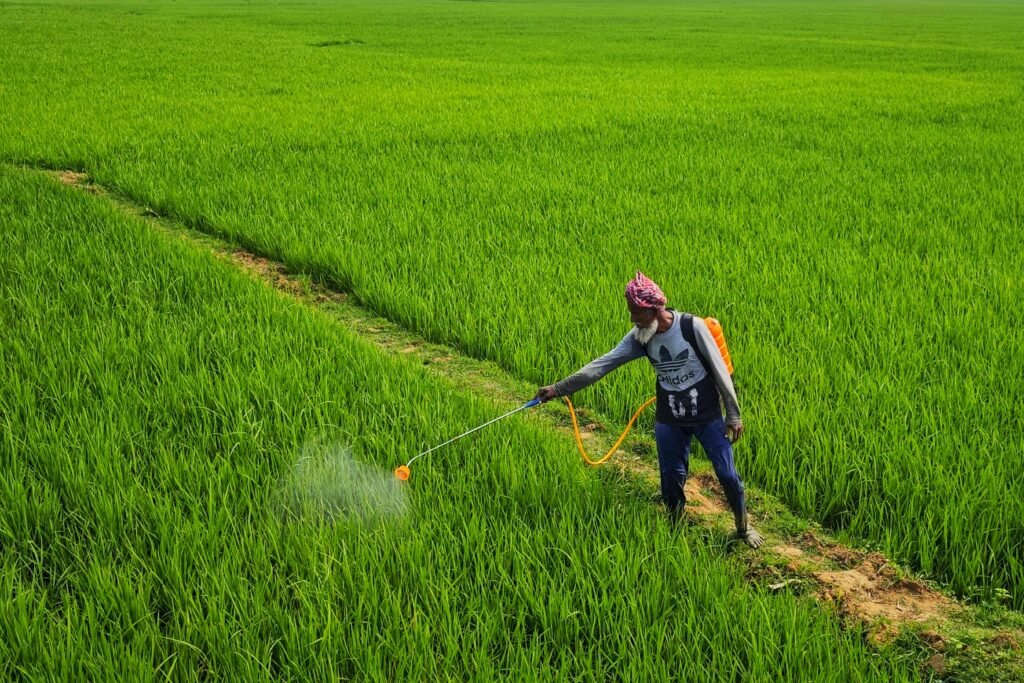💧 Introduction
Water scarcity is a growing challenge in Indian agriculture. With unpredictable rainfall and shrinking groundwater levels, farmers are now turning to drip irrigation – a smart and efficient method to save water and improve crop productivity.
In this blog, we’ll explore how drip irrigation in India helps conserve water, boosts farm yield, reduces input costs, and supports sustainable farming.
🌾 What is Drip Irrigation?
Drip irrigation is a method of delivering water directly to the roots of plants through a system of pipes, emitters, and valves. It minimizes water loss due to evaporation and runoff, ensuring every drop counts.


🚿 How Drip Irrigation Works
A main water source (like a borewell or tank) feeds water into the system.
Water flows through main and lateral pipes.
Small drip emitters release water drop by drop near plant roots.
A filter ensures clean water flow to avoid clogging.
Optional: A fertigation system can deliver nutrients with water.
✅ Benefits of Drip Irrigation for Indian Farmers
1. Water Conservation
Saves up to 60–70% more water compared to traditional methods like flood irrigation.
Ideal for drought-prone areas like Rajasthan, Maharashtra, and Karnataka.
2. Higher Crop Yield
Constant moisture supply at the root level increases crop productivity.
Crops receive uniform water, reducing stress and improving growth.
3. Lower Fertilizer Usage
Fertilizers can be applied through the drip system (called fertigation), leading to better absorption and less wastage.
4. Weed Control
As water is supplied only to the root zone, weeds don’t get water and thus reduce in number.
5. Less Labor & Energy
Automated systems reduce the need for manual watering.
Saves electricity and fuel by using low-pressure water systems.
6. Suitable for All Crops
Highly effective for fruits (mango, banana, pomegranate), vegetables (tomato, brinjal), and commercial crops (cotton, sugarcane).
🌱 Popular Crops That Benefit From Drip Irrigation
✅ Sugarcane
✅ Cotton
✅ Tomato
✅ Banana
✅ Pomegranate
✅ Chilli
✅ Grapes
✅ Papaya
💸 Government Subsidies for Drip Irrigation in India (2025)
To encourage modern water-saving methods, the Indian government provides up to 55–75% subsidy for drip irrigation under various schemes:
🔹 PMKSY – Pradhan Mantri Krishi Sinchayee Yojana
🔹 NABARD Subsidy for Micro Irrigation
🔹 State-Specific Agriculture Schemes (e.g., MAHAJAL in Maharashtra, GGSY in Gujarat)

📌 Tips to Maximize Drip Irrigation Efficiency
✅ Clean filters regularly to prevent clogging
✅ Use pressure regulators and timers
✅ Schedule watering during early mornings or evenings
✅ Pair with mulching to retain soil moisture
✅ Monitor emitter flow rates for uniform watering
📈 Final Thoughts
Adopting drip irrigation in India is no longer a luxury—it’s a necessity for modern farming. It not only saves water, but also increases farm income by improving yield and reducing costs. Whether you’re a small or large-scale farmer, installing a drip irrigation system can transform your farm into a more productive and sustainable unit.
Take advantage of government subsidies, train yourself or your workers, and start your journey towards water-smart agriculture today.
